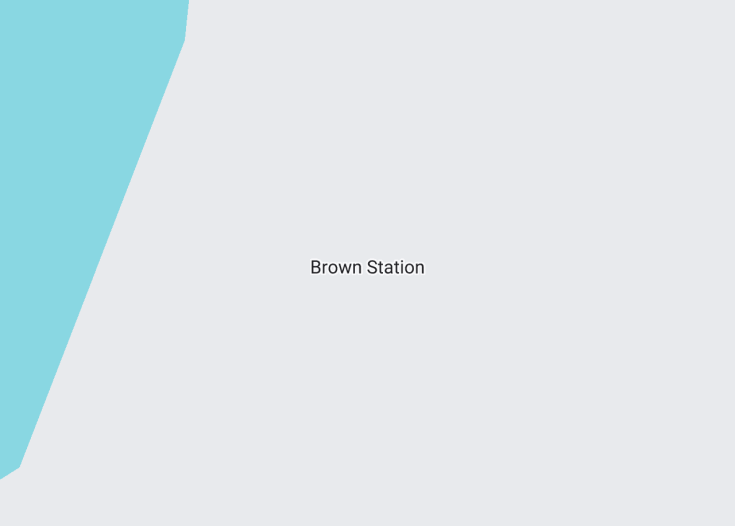Nestled along the icy contours of Paradise Bay on the Antarctic Peninsula, Brown Station, also known as Estación Científica Almirante Brown, serves as a pivotal portal into the pristine wilderness of Antarctica. Originally established by Argentina in 1951, this seasonal station facilitates pivotal scientific research and offers a unique vantage point to experience the surreal, frozen landscape. It provides profound insights into the climatic changes and wildlife patterns of the region, making it an essential stop for researchers and adventurous tourists alike.
Remember to ensure that your clothing is adequate for extreme cold; temperatures here can plummet significantly, even during the summer months.
Plan your visit during the Austral summer, from November to March, when the station is accessible and the Antarctic landscape is at its most dynamic.
Brown Station: Gateway to Antarctic Expeditions
| Country | Antarctica |
| Time in Brown Station | GMT-3 |
| Language spoken | Spanish |
| Population | Seasonal (Source: Scientific Committee on Antarctic Research) |
| Currency | Argentinian Peso (ARS, $) |
| Airports |
|
A place of vast white silences and stunning icy landscapes, Brown Station is a stepping stone for many researching expeditions in Antarctica. Established by the Argentine government, this station serves as a research and exploration hub. Initially set up to facilitate studies in meteorology, glaciology, and seismology, it now hosts researchers from around the globe working on various interdisciplinary scientific programs.
This Antarctic research station was first erected in 1951, and despite several rebuilds due to fire and weather conditions, it has continued to serve as a key site for scientific and environmental studies. Brown Stationalso plays an important role in monitoring environmental changes within the polar region, providing critical data that helps map global climate patterns.
Located on Sanavirón Peninsula within Paradise Bay, Brown Station exemplifies human persistence and the quest for knowledge. As one of the Antarctic stations under Argentina’s jurisdiction, it not only boosts Argentina’s presence in Antarctica but also embodies international cooperation in polar science.
The station is named after Admiral William Brown, who is considered a national hero in Argentina for his leadership in the Argentine navy during the country’s early years of sovereignty. This emblematic name reflects the country’s pride and celebrates its maritime history.
Though isolated, Brown Station is not disconnected from the world. It leverages technology for communication and data sharing, making remote collaborations possible. Every year, scores of scientists and researchers arrive here to contribute to and learn from the projects ongoing at this cold frontier. Their work at Brown Station not only enhances our understanding of Antarctica but also sheds light on broader planetary sciences.
Where is Brown Station?
Located on the Sanavirón Peninsula within Paradise Bay, Antarctica, Brown Station is a prominent research outpost managed by Argentina.
Distances:
[Create a table with the following columns: “Route”, “Distance by car”, “Time by car”. List the most popular routes from major cities in Antarctica to Brown Station, and fill in the respective data without approximations.]
What is Brown Station famous for?
Renowned for its significant contributions to polar research, Brown Station offers critical insights into climate change, glaciology, and Antarctic ecosystems.
History
1951-1965: Establishment and Early Expeditions
The origins of Brown Station in Antarctica trace back to its establishment in 1951, primarily for the purpose of scientific research and territorial presence. Initially set up by the Argentine government, Brown Station was named after Admiral William Brown, who is considered the father of the Argentine Navy. The station began as a basic facility, enabling early Argentine scientists to study glaciology, meteorology, and marine biology, crucial for understanding Antarctic environments.
1966-1980: Development and Modernization
During this period, Brown Station saw significant enhancements, including the construction of more robust facilities to withstand harsh weather conditions and accommodate more researchers. This era marked a shift towards more diversified scientific activities, including astronomical and geophysical studies, signaling a deepening commitment to broader scientific exploration in Antarctica.
1981-Present: Conservation Efforts and Global Collaboration
The recent decades at Brown Station have been characterized by increased international collaboration and environmental conservation. Global warming and environmental issues have brought Antarctic research into the spotlight, with Brown Station playing a vital role in global data collection and climate change research. It also participates in global treaties and conservation efforts, aiming to protect the pristine nature of the continent while continuing to facilitate critical scientific research.
Visit Brown Station
What to see and do in Brown Station, Antarctica.
Visiting Brown Station offers a unique glimpse into the life and work of scientists in one of the most remote parts of the world. Key attractions include the research facilities themselves, where visitors can learn about ongoing scientific projects. The surrounding landscape also offers breathtaking views of icebergs, glaciers, and occasional wildlife, including seals and penguins. Natural phenomena like the aurora australis are not to be missed.
Annual Scientific Symposiums
Brown Station hosts annual scientific symposiums, usually during the Antarctic summer from November to March. These events gather scientists from around the globe, discussing climate change, geological phenomena, and biological studies unique to the Antarctic region.
Best time to visit Brown Station
The optimal time to visit Brown Station is during the Antarctic summer, from November to March. During these months, temperatures are relatively milder, and the accessibility to the station is significantly enhanced, providing better conditions for travel and exploration.
is Brown Station worth visiting?
Brown Station is indeed worth visiting for those intrigued by the pursuit of knowledge and the extremes of nature. It not only offers insight into critical scientific research but also provides a profound perspective on the challenges and beauty of one of the most untouched regions on earth. The experience highlights the vital role of international cooperation in preserving our planet and understanding climate change—a compelling reason for those committed to ecological awareness.









